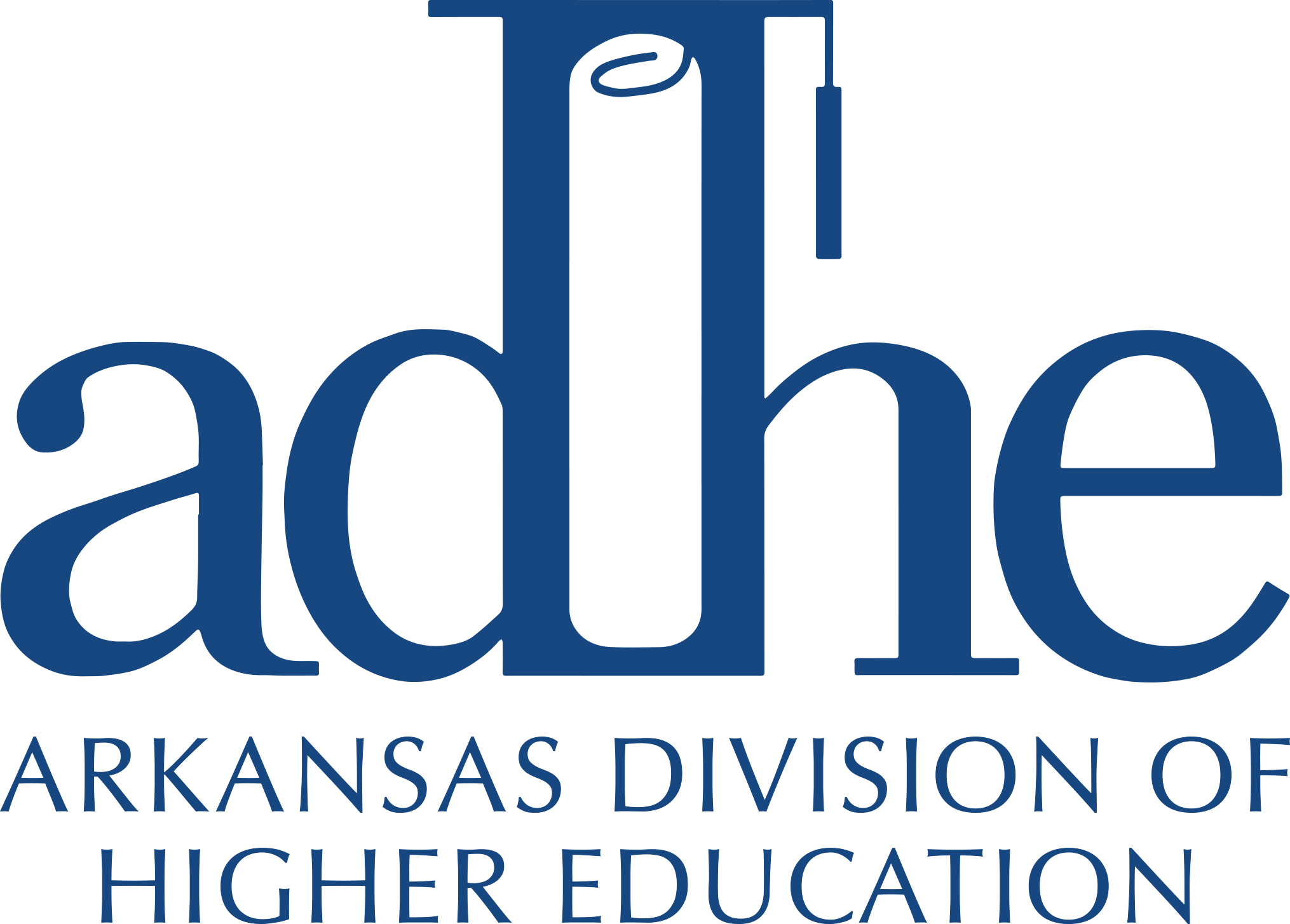Calculation Methodologies
Below are the calculation methodologies utilized within the ADHE master plan: Align Arkansas 2026
Credentials Supply/Demand Gap: Credentials will be counted by CIP Code and degree level for all public and private colleges reporting to ADHE. The baseline was established using AY2018-AY2020 data from the AHEIS Graduated Student Table. This data was aggregated by 4-digit CIP and compared to workforce demand using the Arkansas State Longitudinal Data System. The gap was identified as the workforce need (anticipated job openings) over five years minus the anticipated credential output based upon the AY2018-AY2020 data. The Credential Demand Gap is calculated statewide including credentials data from all institutions reporting to ADHE, both public and private.
Workforce Supply/Demand Gap: Using the same datamatch described in the Credentials Supply/Demand Gap, Workforce Demand is then broken down into regions of the state to identify credential areas of need for each region. Because some high demand fields are in high demand for the entire state but not for a specific region, a non-region specific statewide high demand category has been added to the list of regions. This statewide category captures the credentials that have a demand gap for the state as a whole, but do not show enough demand when broken down at the regional level.
FAFSA Completion: Baseline and current progress for FAFSA completion will be based on reports from https://national.fafsatracker.com. Comparison date for year to year increases will be based on completion by April 1st of each year.
Equity: Baselines and goals for the categories of Underserved minorities, low income, adults, and rural students will be established using the Arkansas Higher Education Information System. First Generation College Student status will be added to the AHEIS system in AY2022 so that measurement and tracking of this data may begin in AY2023. Baselines and goals for the categories of Re-entry and former foster youth will be obtained once a determination is made on the best method for measurement.
Underserved Minority Participants: Using the AHEIS Student Table, find the unduplicated headcount of all students with Hispanic=Yes OR Black/African American=Yes for the Fall On-Schedule Term of the academic year being measured. This should include students of all levels: high school, undergraduate, and graduate levels. It will also include students from both public and private institutions.
Low Income Participants: Using the AHEIS Student Financial Aid Table, find the unduplicated headcount by institution type of all students reported as receiving Pell Grant (fund code = USPELL) greater than $0 in the academic year being measured. This should include all public and private institutions reporting. It should be noted that private institutions only report Pell Grant for students who also receive state aid. Therefore, the headcount of low income participants at private institutions is assumed to be lower than actual.
Adult Participants: Using the AHEIS Student Table, find the unduplicated headcount of all undergraduate students who were ages 25-54 at the beginning of the Fall On-Schedule Term of the academic year being measured. This should include all public and private institutions. It should not include high school or graduate level students.
First-Generation Participants: Using the AHEIS Student Table, find the unduplicated headcount of all undergraduate students who were reported as a First Generation College Student for the Fall On-Schedule Term of the academic year being measured. This should include all public institutions. It should not include high school or graduate level students. It should be noted that First Generation status is not currently reported to ADHE. This status will be added as an optional reporting component for the AY2022 year and will become mandatory for AY2023. Therefore a baseline will not be established until the completion of AY2023, Fall Term reporting.
Rural Participant: Using the AHEIS Student Table, find the unduplicated headcount of all first-time entering undergraduate students for the Fall On-Schedule Term of the academic year being measured. This should include all public and private institutions. Based upon the age of the student (see definition of Rural Participant above), the graduated High School Code or the County of Origin for all Arkansas residents will be used to determine if the student is Rural: Remote (HS Code) or Completely Rural (County of Origin). This measure will not include students attending while in high school or graduate level students.

